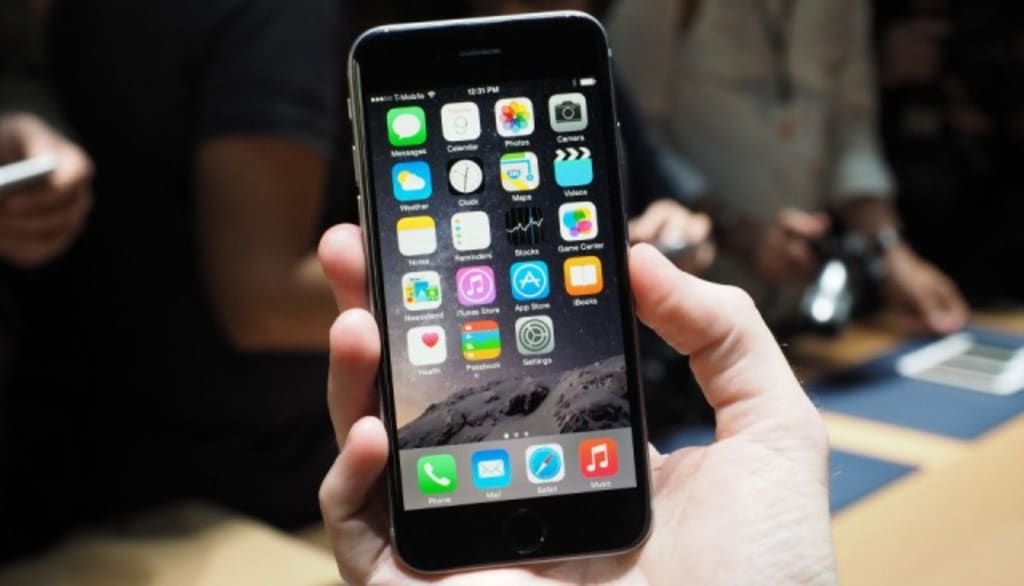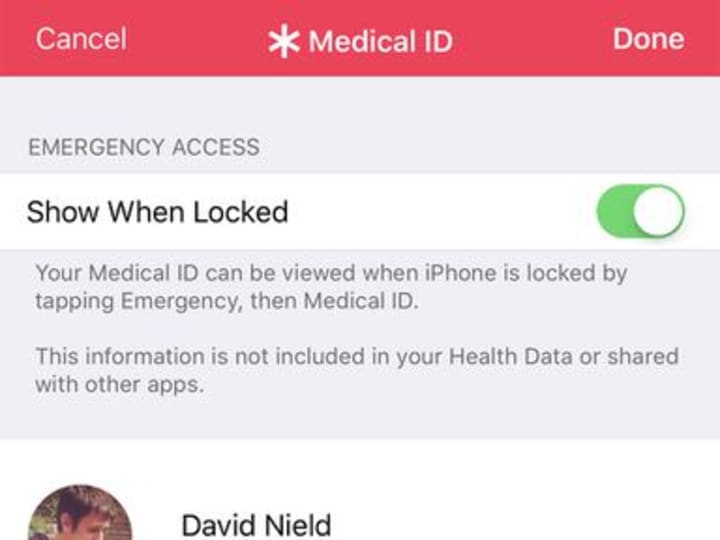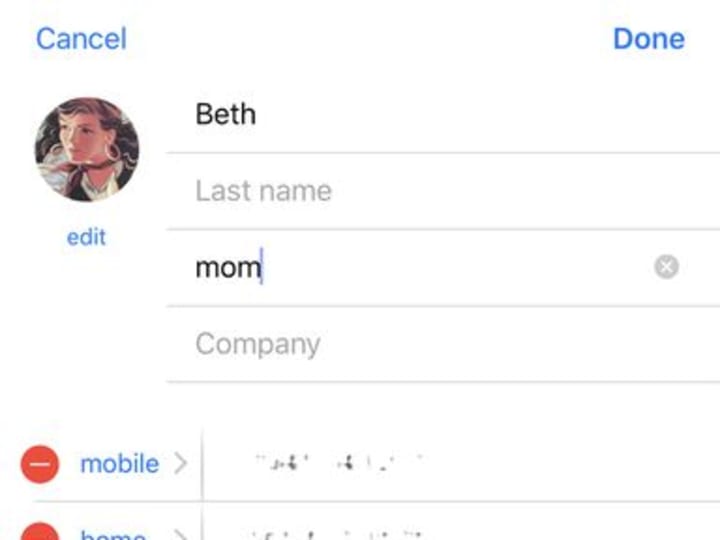10 Hidden tricks you didn’t know your iPhone could do!
Both iPhones and Android devices have their pros and cons, but the general consensus is that iOS is a little easier to pick up and use

while Android offers more in the way of customization and configuration. Still, simple as Apple’s operating system seems, you can find plenty of advanced features hidden below its polished surface.
If you don’t know these features exist, however, you might never discover them. Which is why we’re here to point them out. Learn how to hide private photos, use your phone as a level, activate a hidden trackpad, teach Siri nicknames, and more.
Use the keyboard as a trackpad
Did you know the iPhone keyboard can double as a trackpad? With this feature, you’ll be able to move the cursor more accurately and jump to bits of text, all without having to tap on the screen. To use it, you’ll need an iPhone with 3D Touch capabilities (iPhone 6S or newer), and this trick also works on any iPad.
On the iPhone, firmly press and hold anywhere on the keyboard to activate the trackpad. Once the keyboard goes blank, you’re in business. Then, drag your finger around to move the cursor through the text. On an iPad, drag two fingers in any direction on the keyboard to activate trackpad mode.
Check that a surface is level

You might not have realized that the built-in iOS measurement app has leveling capabilities. Even if you did, you might not not have picked up on some of the things it can do. To find it, open Measure and tap Level on the right.
You can use the level with your phone laid flat or perched on its side in either portrait or landscape mode. If you want to measure the difference between two surfaces or are dealing with a set surface that’s not perfectly horizontal or vertical, tap the screen to set the angle to zero. Then move your phone—the red area will show you how much the two angles vary.
Use it to make sure your pictures are hanging correctly and your DIY is up to scratch. An iPhone may not be as precise as a dedicated bubble level, but it’s still handy.
Hit backspace in Calculator
If you spend a lot of time inside the iOS Calculator app, you know the frustration of mistyping a digit and having to start the calculation all over again. This hidden backspace function means you won’t have to hit the C or AC buttons every time you make a mistake. Just swipe to the left or right at the top of the screen where the digits are displayed. The motion acts as a backspace command, and will remove the number you entered last.
While we’re talking about Calculator, have you ever put the app into landscape mode with a twist of your iPhone? This view reveals a host of extra functions.
Hide your private photos

We all hand our phones over to friends when we want to share photos or videos. But what if your collection includes sensitive images you'd rather not show anyone else? Luckily, the iPhone makes it easy to hide your most personal pictures from view.
Inside Photos, select one or more images, then tap the Share button and choose Hide. As the confirmation message says, your chosen pictures will disappear from every location in your library, but you’ll still be able to see them in the Hidden album within your Albums.
Go to bed on time
In addition to letting you set alarms so you’ll wake up on time, iOS will help you stick to a given bedtime. Open up the Clock app on your iPhone and then tap on the Bedtime link at the bottom to get started.
First, your phone will ask you what time you want to wake up in the morning. When that’s set, you can decide what alarm sound you’d prefer, what time you’d like to go to bed, and what days of the week you’d like to stick to that schedule. Your iPhone will ping you when it’s time to hit the hay, automatically turn on Do Not Disturb, and track how well you’re doing at reaching your sleep targets.
Get your lost phone back

Even if you don’t use the Apple Health app, it’s worth filling out the Medical ID section. That’s because the details you enter here, such as your allergies and contact information for your next of kin, will appear on the lock screen when someone taps the dialer’s Emergency link. In other words, anyone who picks up your device can access this information. So, if you lose your phone, a helpful bystander can tap through to find a way to return it.
To find your Medical ID, enter the Settings app, tap Medical ID, and hit Edit. Then plug in whatever information you’d like. If you want to make sure people can it, toggle the Show When Locked switch to “on."
Another, better-known way to locate a lost device is the Find My iPhone feature, which lets you track your phone on a map. Activate the ability in the Settings app by tapping your name and selecting Find My.
Receive notifications via camera flash
Those of you who prefer a visual phone alert to an audible one will like this: You can get your iPhone’s flash to blink several times whenever you receive a notification.
To get the feature working, go into Settings and tap Accessibility. Then, enter Audio/Visual and switch the LED Flash for Alerts toggle switch to “on.” If you’d prefer to not be disturbed at all when the phone is in silent mode, you can tell the flash not to light up then.
Teach Siri to use nicknames

Siri is pretty adept at working out who you want to text or call. But you can speed up the process by adding nicknames like "mom" or "Lizzie" to your contacts. In fact, Apple's Contacts app has a field especially for this, and Siri can use it to identify people.
To manually input a nickname, open any contact card, tap Edit, choose Add field, and select Nickname from the list. Siri will also remember your relationships. Tell the assistant to “call mom” or “call my boss,” and it’ll ask which contact that designation belongs to and whether it should remember for future calls. If you want to manually assign a relationship, tap on your own contact card, hit Edit, and then add related name. Choose from a number of different relationships and tap the "i" icon to link that relationship to a specific contact.
Magnify what the camera sees
The ability to zoom in on real-world images might prove helpful in all kinds of situations, such as when you’re squinting at a menu in a dimly-lit restaurant. To use it, go to Settings, open Accessibility, and then tap Magnifier to toggle the feature on. You can also enable Auto-Adjust Exposure at this time, which means the camera screen will react to ambient light levels.
With Magnifier on, you can launch the iOS Camera app and triple-tap the side button (the Home button on older phones) to bring up the Magnifier option. Use the slider at the bottom of the screen to take a closer look at anything—even closer than your camera’s zoom.
Write on email attachments

Sometimes, an email attachment just doesn’t convey enough information on its own. So annotate it with Apple’s built-in Mail app. Digital scribbles, text overlays, a zoom-in magnification window, digital signatures—you can add all of these on top of email attachments.
To modify an image or PDF attachment you’ve received, just open it and tap the markup icon (a pen tip in a circle) in the top right. When you hit Done, it’ll ask how you want to reply or if you want to discard your changes. If you choose to reply or create a new message, you’ll be able to review your email before you send it. For a file you’ve attached to a new email, tap the attachment and select Markup.
Source: Popsci.com
About the Creator
Enjoyed the story? Support the Creator.
Subscribe for free to receive all their stories in your feed. You could also pledge your support or give them a one-off tip, letting them know you appreciate their work.






Comments
There are no comments for this story
Be the first to respond and start the conversation.